In Guo Shifu's studio, he slowly unfurls his handscrolls, a unique form of traditional Chinese painting. Before his eyes, images of blooming peonies, a tree branch, a stalk of bamboo, and a string of grapes slowly unveil the charm of Chinese ink-and-wash painting. "The beauty of painting is decided by the cultural accomplishment of the creator. One's cultural cultivation will lead to his own creative style," said Guo, an esteemed Chinese painter and member of the China Artists Association.
20:56
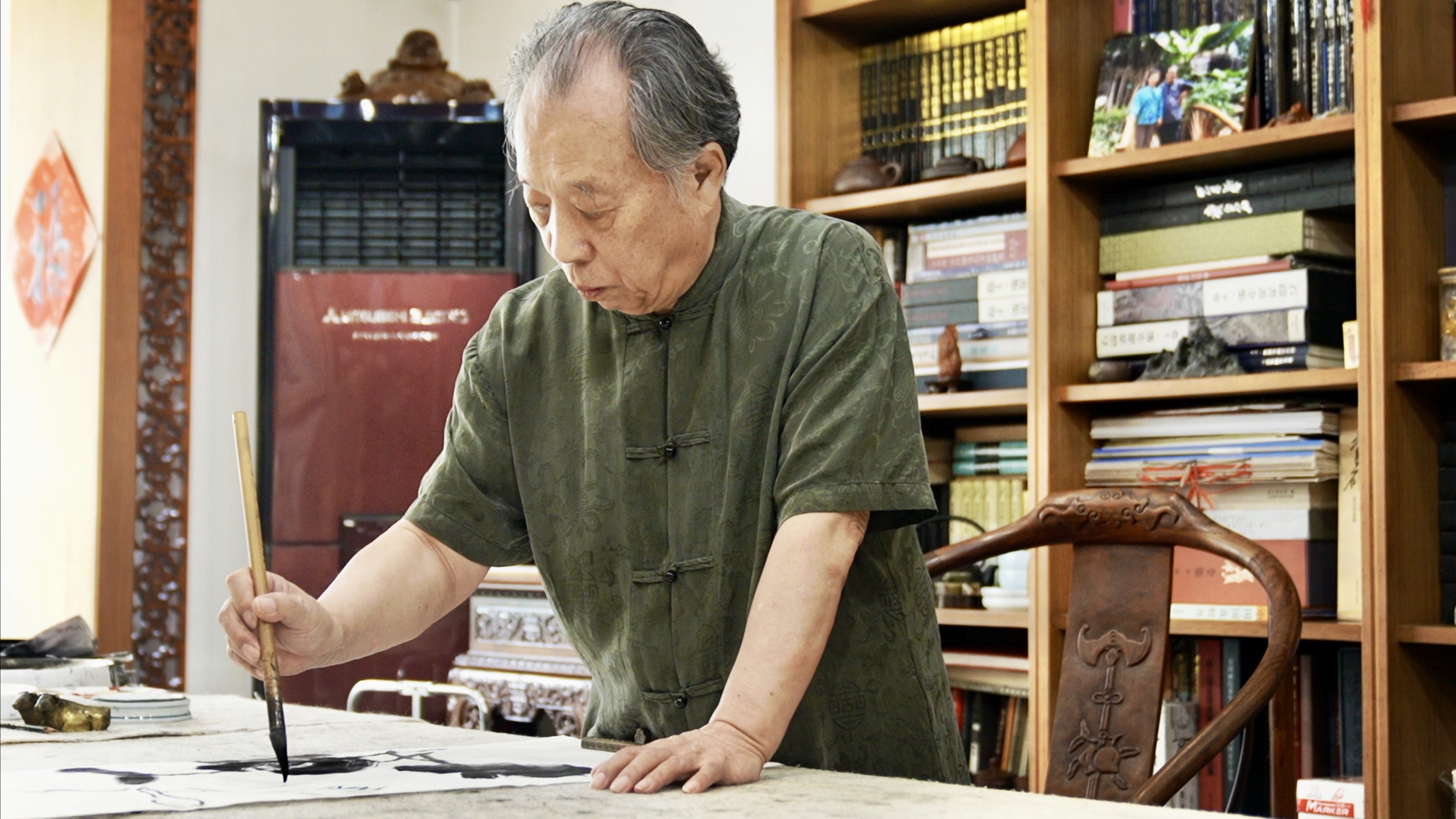
To Guo's eyes, painters have to be familiar with their subjects, as much as with the ink and brush. "It must appear somewhere between resembling and not resembling the subject. This is based on the painter's personal understanding." With a deep understanding of cultural heritage and a mastery of a variety of artistic disciplines, he has achieved eminence in the realm of flower-and-bird painting while also excelling at calligraphy, seal engraving and poetry.
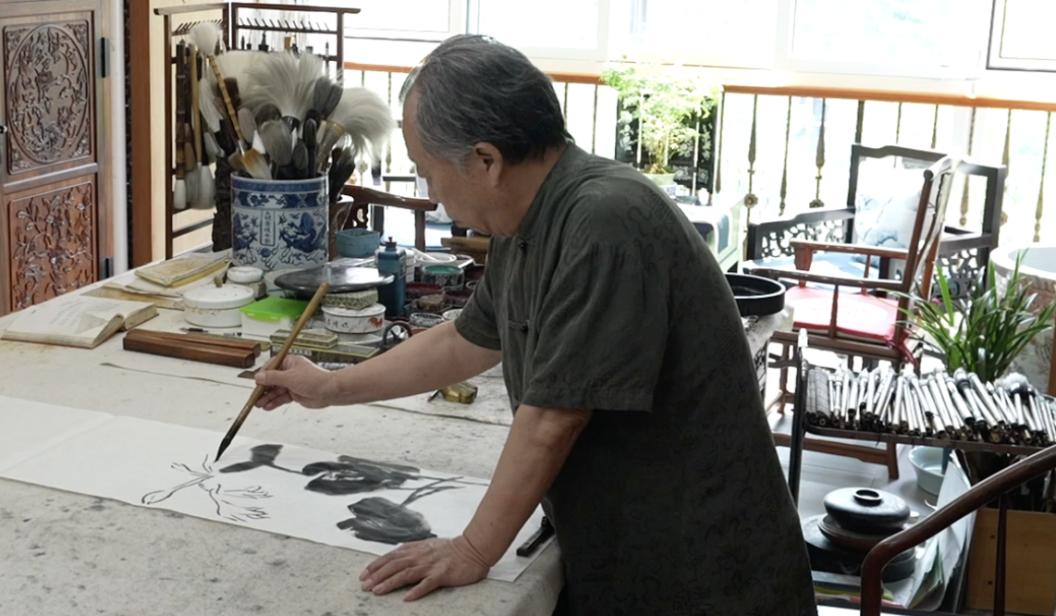
He is now an important figure in the contemporary Chinese art scene. What might surprise you is that his expertise in painting and calligraphy was entirely self-taught. In 1945, Guo Shifu was born into a family rooted in the traditions of Peking Opera. He started learning opera from a young age. One day, a friend of his father brought some bookmarks with Peking Opera facial makeup patterns, which ignited Guo's passion for painting. Guo thought he could paint something like that, too, because he knows Peking Opera so well. Then he painted a few, which were recognized by Rongbaozhai, a famous Beijing-based art shop. From then on, he embarked on his life-long journey of self-study.
"There are many similarities between Peking Opera and Chinese painting. Chinese painting emphasizes freehand style, and in fact, Peking Opera is the most freehand form of art," Guo said. As his growing passion for painting gradually surpassed his love for Peking Opera, Guo, who also worked as a Peking Opera actor in a Beijing troupe, changed his focus. A few years later, he stopped working as a performer and became a stage scene painter in the troupe, when he got the chance to learn some Western painting techniques as well.
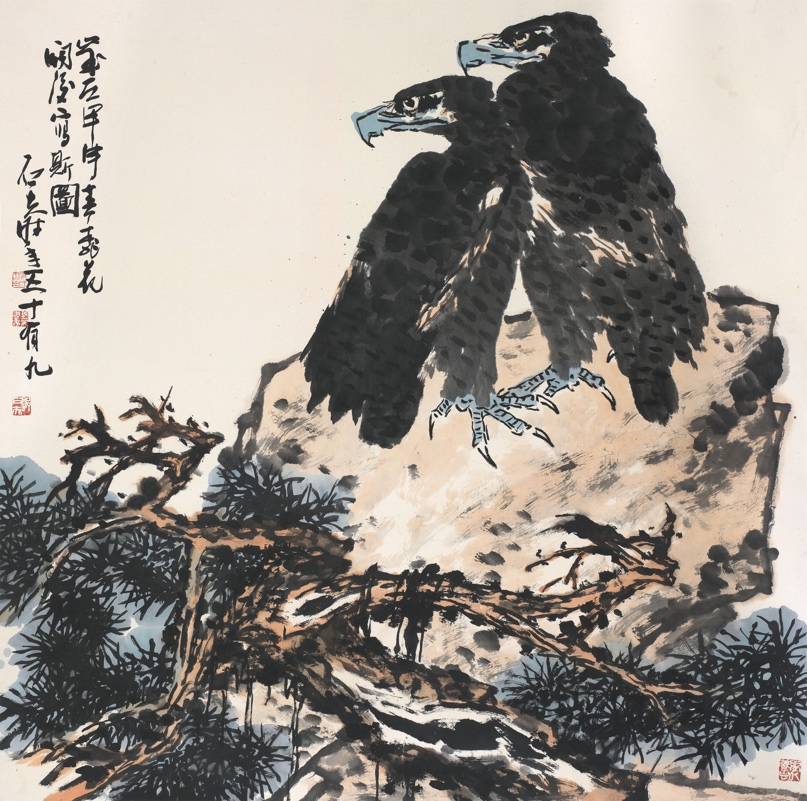
A painting by artist Guo Shifu /Photo provided to CGTN
A painting by artist Guo Shifu /Photo provided to CGTN
While in his teens, Guo spent a lot of time in the Palace Museum in Beijing. He immersed himself in the gallery at the museum every day and was deeply impressed by the charm of Chinese culture. He also studied the works by painting masters like Wu Changshuo, Pan Tianshou and Qi Baishi. For decades, he followed in the footsteps of his predecessors, gaining a profound knowledge of the styles of numerous master painters. As Guo gradually formed his own style, great things awaited him.
In the late 1970s, the implementation of the Reform and Opening-up Policy started. It injected strong vitality to the once-stagnant traditional Chinese painting scene. In 1979, Guo Shifu, along with other young artists, founded the Baihua Painting Committee in Beijing, gathering over 50 young Chinese painters. Over the next few years, they regularly organized exhibitions and gatherings, learning from each other and communicating with the public.
In 1985, Guo held his first solo exhibition in the biggest hall of the China National Art Museum, a great honor for a Chinese artist. It was also in that year that Guo's long-standing ambition was finally realized. At the age of 40, he was admitted to the Beijing Painting Academy as a professional artist, specializing in freehand flower-and-bird paintings. In this oldest and largest professional art academy in China at the time, Guo gained more opportunities to collaborate with prominent figures in Chinese painting. Artist Zhang Lichen was one of his frequent partners.
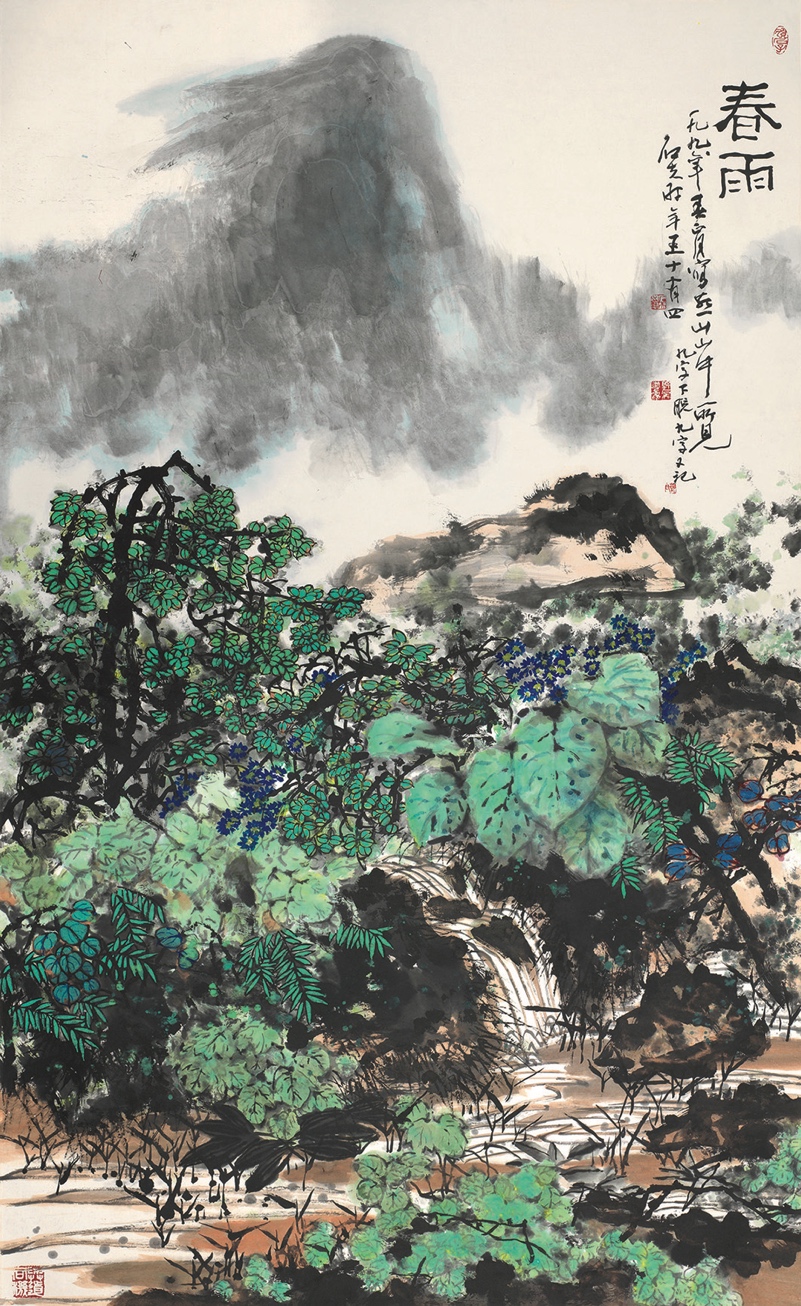
A painting by artist Guo Shifu /Photo provided to CGTN
A painting by artist Guo Shifu /Photo provided to CGTN
"Guo Shifu's stroke style is straightforward, bold and persistent. He was greatly influenced by Qi Baishi, and later, he was also significantly influenced by Wu Changshuo. His peony paintings are very impressive. Compared with other Chinese painters, he finds his own form of exploration in terms of expression and methods. I think he has taken a step further on the basis of the Yuan Dynasty's painting skills. He has his own way of combining the skills of outlining and dotting, making the flower heads in his paintings special. His application of colors is also unique," said Zhang Lichen, professor at the Central Academy of Fine Arts.
Guo Shifu believes becoming an accomplished painter demands more than just years of dedicated practice and unending exploration of traditional culture. It also requires a keen ability to discover beauty and a heightened sense of perception. "You see different things in different seasons. Listening to birds, smelling flowers, observing the wind, clear skies, rain, and dew – all these things will trigger different inspirations in you. You need the ability to discover beauty, to find the beauty everywhere in life," he explained.
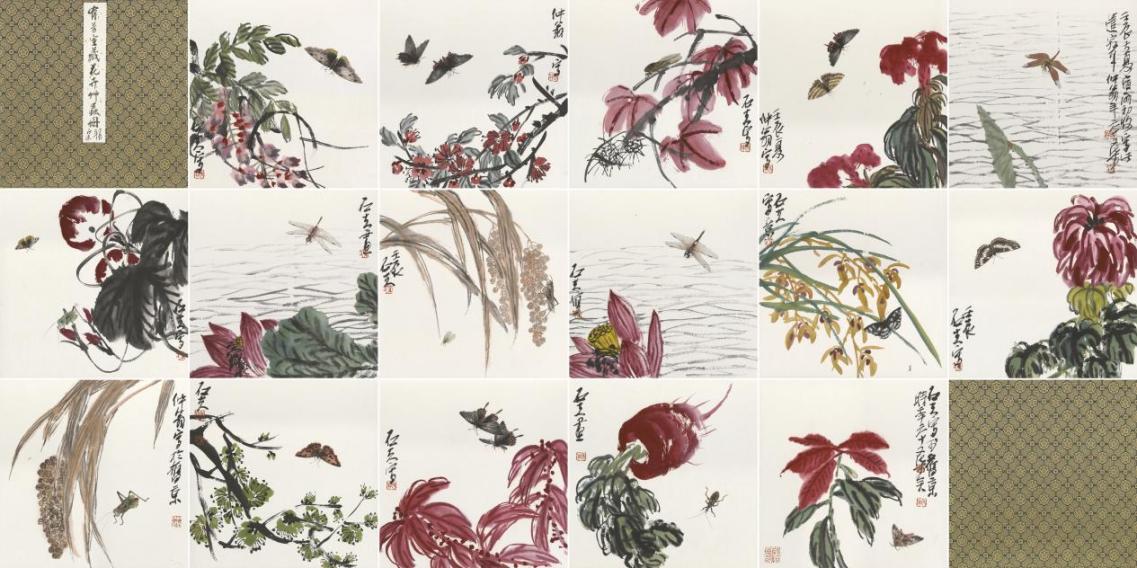
Some fine brushwork paintings by artist Guo Shifu /Photo provided to CGTN
Some fine brushwork paintings by artist Guo Shifu /Photo provided to CGTN
Artist Liu Jindang is a student of Guo Shifu. He said Guo's own artistic philosophy, which is to pursue the upright and bright brushwork style of traditional freehand painting, is a highly instructive idea in today's world of calligraphy and painting. "Mr. Guo advocates that freehand flower-and-bird painting should not be petty. We should practice calligraphy more, especially seal script, bronze inscriptions, Han stone tablets, and cursive script. By incorporating calligraphy into painting, it can better convey the grand spirit of a robust vitality," Liu said.
For centuries, traditional Chinese ink paintings have incorporated not only poetry, calligraphy, and painting but also another essential element - seals. Today, artists who excel in both painting and seal engraving are rare, and Guo Shifu is one of them. In his study, seals of different styles can be found in every corner, all crafted by himself. "Seal engraving is a unique art form in Chinese culture. I learned it with the purpose of enhancing my own painting. Whether the carving is neat or bold in style, the seals I carve can align with my painting style," Guo said.
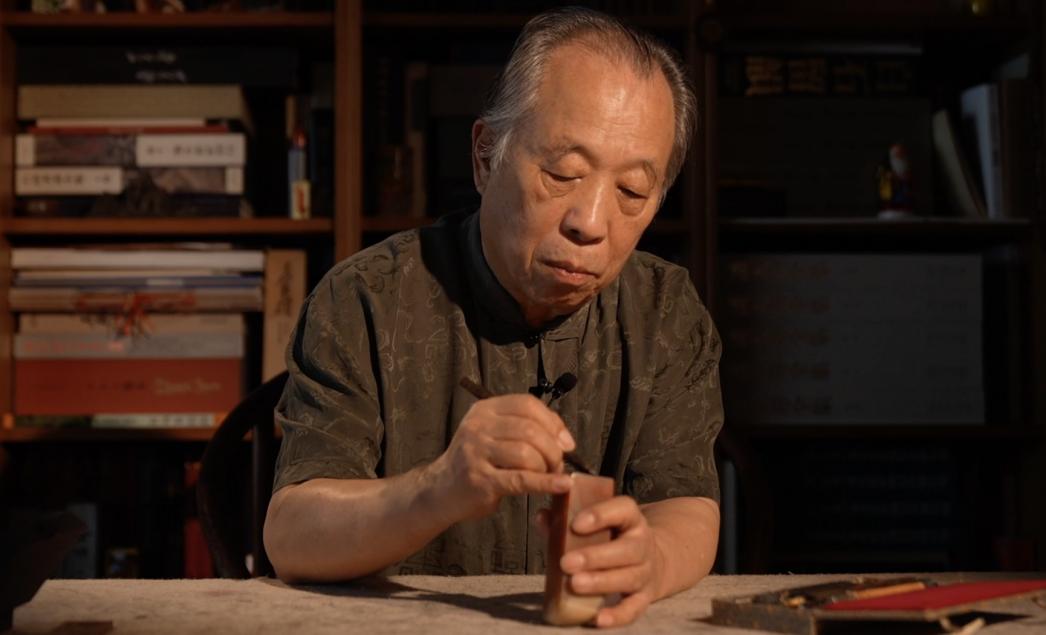
Artist Guo Shifu is engraving a seal. /CGTN
Artist Guo Shifu is engraving a seal. /CGTN
Guo believes that a Chinese painter needs to delve deeply into poetry, calligraphy, painting, and seal engraving, because they are deeply rooted in Chinese culture. "This culture is so profound that it requires a lifetime of dedication."
Looking back, Guo considers himself to have been incredibly fortunate. His youthful passion remains unchanged over the decades. He is still a big fan of Peking Opera. And over the span of more than 60 years, he has imprinted his fervor for Chinese painting into the very core of his being.